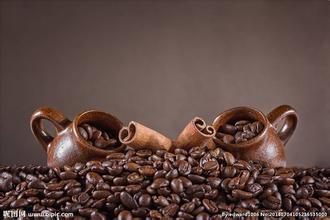Hand flushing-how much water is the most suitable for Kenyan coffee beans?
On an international scale, the increase in the number of Kenyan coffee is obvious, with exports of 800000 bags in 1969-1970 and increased to 2 million bags in 1985-1986. The general yield is stable at 1.6 million bags, with an average yield of about 650kg per hectare. Even before coffee prices skyrocketed, the average price of coffee in Kenya had been rising. Prices in 1993-1994 were 50% higher than they were 12 months ago. The price increase is mainly due to the increase in demand. It is fragrant, full-bodied, with fruit flavor, and the taste is rich and perfect. Kenyan coffee has a wonderful fruit flavor, tastes like BlackBerry and grapefruit, and is a favorite of many coffee gluttons. This coffee has an excellent medium purity, crisp and refreshing taste. It has a fresh flavor and is most suitable for drinking iced coffee in summer. When tasting this coffee, if it is paired with sour fruits such as grapefruit, it will certainly give me the best coffee experience. "not much like coffee, but rather like fruit tea" is the common feeling of many people about this kind of shallow roasted Kenyan coffee. There are two types of coffee farms in Kenya. One is a large planting farm covering an area of more than five acres, but the average elevation is low. As far as Kenyan coffee is concerned, the coffee beans of the big farm are of medium quality. The best Kenyan beans come from small farms, and most of them are located in the foothills or volcanic slopes above 5,000 or 6,000 feet. Don't underestimate the small farmers in Kenya. They are just like male ants, and their overall production capacity is higher than that of large farms, which is about six to four. This is quite rare in bean-producing countries. Kenyan coffee is widely appreciated by connoisseurs, thanks in large part to small farmers guarding the foothills and producing high-quality coffee. In addition, Kenya beans must have a strict grading system. Coffee beans taken out by washing plants are divided into five grades according to size, shape and hardness, with the highest being PB, followed by AA++, AA+, AA and AB. This grading system is similar to Colombia, mainly in terms of particle size and shape, but selling well does not necessarily lead to good flavor. This is what coffee fans should know. The current international evaluation of Kenyan beans is not as good as in previous years. It is believed that this has something to do with the abnormal climate, which is not conducive to the growth of coffee, but the matter is not so simple.
For steaming time, individuals often look at the powder layer formed by steaming. If no bubbles come out, it means that the steaming time is enough, and you can inject water at the central point. Of course, many people are used to using timers for 30-40 seconds, so they can't cope with different beans and different freshness. Resulting in the possibility of steaming some defective smell out. Beginners can use timers temporarily, but it is recommended to observe the powder layer for a long time.
[please note: if you steam quickly with a large current, no bubbles will appear. If you use fine water flow, but the circle is irregular, the water flow is intermittent, and there will be no bubbles coming out. After circling 6 concentric circles, the electronic claim will show that the amount of water is about 70-80 grams (including 31.8 grams of water used for steaming). If it exceeds 80 grams, the flow is too large, and you must practice the smallest flow + circle. Use this thin water to slowly circle and disperse the powder layer formed by steaming, and all the powder is wet to the water, determining the direction of the taste. The first feeling of drinking coffee is that the taste is distributed to the whole mouth, and every taste bud can feel the coffee, which can improve the cleanliness and sweetness. At this stage, the requirement for water flow is the lowest, even if you break the flow, it will not affect the taste, as long as it can be wet to all the powder. If the filter paper is washed onto the filter paper during the circle at this stage, the water on the filter paper will be absorbed by the powder layer, because when the fine water flows around, the water absorption rate of the powder layer is slow and the water in the powder layer is not saturated.

Important Notice :
前街咖啡 FrontStreet Coffee has moved to new addredd:
FrontStreet Coffee Address: 315,Donghua East Road,GuangZhou
Tel:020 38364473
- Prev

Red Wine treatment Coffee Bean treatment washing and Solar introduction of manors in producing areas
Introduction to the treatment of coffee red honey Sasa was described in the competition: the coffee fruit was put into a sealed metal container for anaerobic fermentation, and the variable factors such as PH value and the type and number of bacteria involved in the fermentation were controlled purposefully. The processor injects carbon dioxide into the container to prevent
- Next

What are the skills of coffee, flower, love and leaves for beginners?
The introduction of coffee flower drawing skills directly into the shaping method is the most difficult way of coffee flower drawing skills. Because this method must pay attention to all kinds of details, from the state of espresso, the way the milk is foamed and the degree of organizational detail, to the skill of combining the two, coupled with the direct injection molding method, the forming time of the pattern is very short, so it also needs to be very smooth and has
Related
- What is the meaning of lactic acid fermentation with coffee bean treatment?
- How to judge the state of foam by sound?
- How does the latte pull out the unicorn pattern? Come to get for a little trick to improve the flower pull!
- Will flower pulling affect the taste of the latte?
- Do you know the history of coffee?
- The difference between honey treatment and sun washing what is raisin honey treatment?
- What kind of milk can a novice use to make coffee foam to keep the foam longer? The correct method and skills of milking tutorial sharing
- Why do washed coffee beans taste sour? Flavor characteristics of washed Coffee
- Introduction to the skill of how to practice the size and height of water injection around the circle of hand-brewed coffee
- How do beginners practice coffee flower drawing from scratch?

